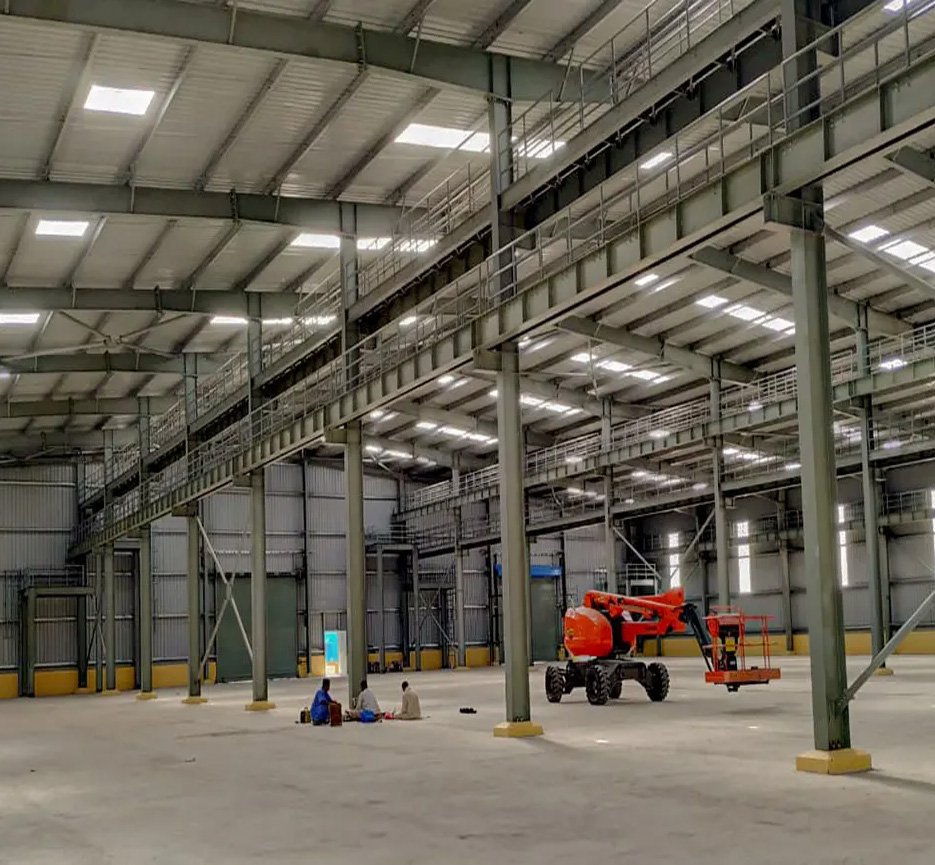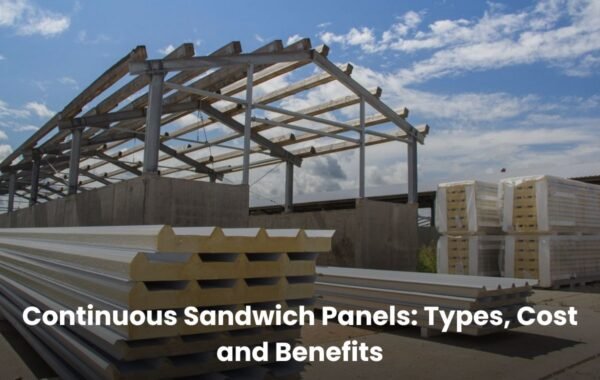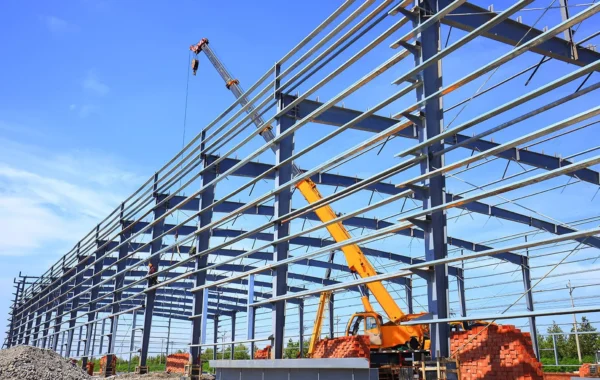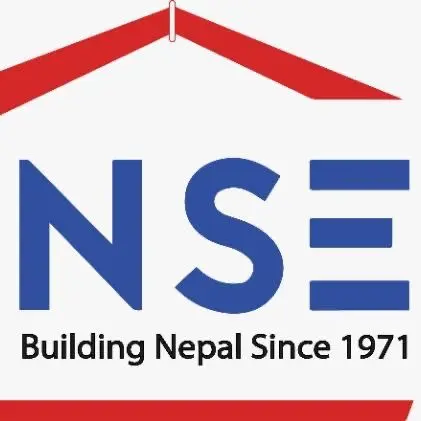
Construction Inflation in Nepal: Pre-Engineered vs Conventional Buildings
Construction inflation, the persistent rise in the cost of building materials, labor and logistical services has become a defining challenge for Nepal’s construction sector. From cement and steel to skilled labor and transport, each input has seen volatility driven by global commodity swings, supply disruptions, and local production constraints.
As developers and owners rethink cost and schedule risk, Pre-Engineered Buildings (PEBs) are emerging as an alternative to conventional (cast-in-place and conventional steel/RC) construction.
This article explains what drives construction inflation in Nepal, breaks down the major cost components, and compares lifecycle and upfront economics for PEB vs conventional construction with evidence and references to local and international studies.
Why construction Inflation Matters in Nepal
Nepal’s construction sector is highly sensitive to a combination of domestic and international factors that directly influence project costs and timelines.
1. International Commodity Prices
Materials such as steel, cement clinker, and fuel are largely imported, and their prices fluctuate with global markets.
For example, a spike in global steel prices or international oil costs immediately translates into higher local construction expenses, as most heavy machinery and transportation rely on fuel.
2. Import and Logistics Constraints
Nepal’s landlocked geography creates unique logistical challenges. Materials arriving via Indian ports or other neighboring countries face transit delays, border checks, and transport bottlenecks.
Such constraints not only increase transportation costs but can also delay project schedules, leading to higher labor and overhead expenses.
3. Domestic Production Shortfalls
Local cement and steel production often fails to meet demand, especially during periods of rapid urbanization or post-disaster reconstruction.
Shortages force developers to rely more heavily on imports, further inflating costs and creating uncertainty in project budgeting.
4. Labor Supply and Wages
Skilled labor, including masons, welders, and crane operators, is limited in Nepal, and migration of workers abroad has exacerbated the shortage.
Rising wages due to supply-demand imbalance contribute significantly to total construction costs, especially for conventional building methods that are labor-intensive.
5. Policy Factors
Government regulations, including tariffs on imported materials, credit policies, and taxes, can either mitigate or amplify inflationary pressures.
For instance, higher import duties on steel or cement increase upfront material costs, while restrictive lending policies can raise financing costs for construction projects.
The World Bank and Nepalese government surveys indicate that periodic contractions in domestic cement and steel production have repeatedly caused project delays and increased costs. Developers often face uncertainty in scheduling, budgeting, and procurement, highlighting the sector’s vulnerability to both domestic supply issues and global market fluctuations.
Main Factors that Drive Construction Costs in Nepal
Construction inflation in Nepal is influenced by a wide range of domestic and global factors. These variables directly impact the cost of labor, materials, equipment, and project timelines.
Understanding these factors is essential for comparing Pre-Engineered Buildings (PEBs) with conventional structures, as both building methods are exposed to inflationary pressures but in different ways.
1. Rising Material Costs
The cost of construction materials such as cement, steel, sand, and aggregates has surged significantly in the past decade.
According to a report by the Federation of Contractors’ Associations of Nepal (FCAN), steel prices alone increased by nearly 30% between 2020 and 2023 due to supply disruptions and rising global demand.
Similarly, cement prices have risen by 20–25% annually during peak periods of demand.
| Material | Avg. Price in 2020 (NPR) | Avg. Price in 2023 (NPR) | % Increase |
|---|---|---|---|
| Steel (per ton) | 95,000 | 125,000 | 31% |
| Cement (per sack) | 600 | 750 | 25% |
| Aggregate (per cu.m) | 1,200 | 1,700 | 41% |
| Sand (per cu.m) | 1,500 | 2,100 | 40% |
Source: FCAN Nepal; Ministry of Urban Development, 2023
2. Labor Costs and Shortages
Labor accounts for 30–40% of total construction expenditure in Nepal. With the migration of skilled workers abroad (mainly to the Gulf countries and Malaysia), the domestic construction sector has faced severe labor shortages.
This has led to increased daily wage rates from NPR 900 per day in 2018 to NPR 1,500–1,800 per day in 2023 (Source: ILO Nepal, 2023).
PEBs, which require less manual labor due to factory-fabricated components, are less affected by wage hikes compared to conventional building methods.
3. Fuel and Transportation Costs
Nepal’s dependency on imported petroleum products adds another layer of inflation. Transporting heavy materials such as steel and cement from India or through challenging road networks inside Nepal increases costs drastically.
A World Bank report (2022) highlighted that logistics costs in Nepal are 30–40% higher compared to regional peers like India and Bangladesh.
4. Government Policies & Taxes
Fluctuating tax rates, import duties on raw materials, and inconsistent government procurement policies also contribute to construction inflation.
The Nepal Rastra Bank (NRB) has reported that construction inflation has averaged 8–10% annually over the last five years, largely due to inconsistent policy measures (NRB, Annual Report 2022).
5. Natural Disasters & Climate Challenges
Nepal’s vulnerability to earthquakes, floods, and landslides often disrupts supply chains and damages infrastructure, causing temporary spikes in material and labor costs.
The 2015 earthquake, for example, led to a 50–70% price rise in steel and cement within months due to demand surges (Source: UNDP Nepal, 2016).
6. Global Supply Chain Disruptions
Events like the COVID-19 pandemic, Russia-Ukraine war, and container shortages have also increased Nepal’s import costs for construction materials.
Since Nepal imports most of its steel and machinery, global supply shocks directly inflate local project budgets.
What is a Pre-Engineered Building (PEB)?
A PEB is an engineered, factory-fabricated steel building system where main elements (frames, roof, cladding, purlins) are manufactured offsite to specific dimensions and assembled on site. PEBs emphasize optimized sections, reduced steel waste, faster erection and predictable quality.
Multiple studies show PEBs can reduce material take-off and labor by significant percentages compared to conventional steel/concrete approaches.

How Inflation affects PEB vs Conventional construction
Construction inflation impacts every building method, but its effects vary depending on the approach used. Conventional construction, characterized by in-situ reinforced concrete, masonry, and labor-intensive processes is highly sensitive to rising prices of steel, cement, labor, and transportation.
Delays caused by supply chain disruptions or labor shortages further amplify costs, making project budgeting unpredictable.
On the other hand, Pre-Engineered Buildings (PEBs) are factory-fabricated and optimized for material efficiency. Since components like steel frames, roof sheets, and wall panels are pre-manufactured, PEBs reduce on-site labor requirements, minimize waste, and shorten construction timelines.
These factors make PEBs less vulnerable to inflationary spikes in labor and certain materials, although they remain sensitive to global steel price fluctuations and logistics costs for large prefabricated members.
By comparing PEBs and conventional construction side by side, stakeholders can understand how each method responds to price volatility, and make informed decisions to mitigate the risks of construction inflation in Nepal.
Table 1 — How each cost driver impacts PEB vs Conventional
| Cost driver | Effect on Conventional | Effect on PEB | Net implication |
|---|---|---|---|
| Steel price rise | Large — conventional steel sections often over-designed and wasteful | Medium — PEBs use optimized sections; less waste | PEB: lower sensitivity |
| Cement & masonry price rise | Major — concrete works, brickwork heavy | Minor — PEB reduces concrete scope (foundation only) | PEB advantage |
| Labor wage inflation | High — skilled labor for in-situ casting and finishing | Lower — shorter erection time, less on-site labor | PEB advantage |
| Transport/logistics | High — many trips for material deliveries | Moderate — bulk delivered panels/frames but fewer visits | PEB advantage if factory logistics stable |
| Design & approval costs | Moderate | Slightly higher upfront (shop drawings/fabrication) | Conventional later costs higher (rework) |
| Maintenance & lifecycle costs | Higher (roof leaks, cracking, maintenance of finishes) | Lower (metal cladding, designed drainage) | PEB advantage long term |
Upfront Cost Comparison- Typical Ranges
PEB cost ranges vary with specification. Local industry benchmarking shows material & fabrication cost for PEBs in Nepal can range (materials + fabrication) roughly NPR 1,340–3,350 per sq.ft (for structural & cladding components), with total turnkey cost dependent on finishes and MEP.
Conventional building costs (RC/brick or conventional steel + brick) will vary widely but often carry higher labor and time premiums. Use the ranges below as indicative; projects differ by finish level, site, and MEP scope.
Table 2 — Indicative unit cost ranges (NPR/sq.ft): Nepal
| Item | PEB (indicative) | Conventional (indicative) |
|---|---|---|
| Structural + envelope (materials + fabrication) | 1,340 – 3,350 | 2,000 – 4,000 |
| On-site labor/erection | 300 – 700 | 800 – 1,500 |
| Finishes & MEP (per specification) | 800 – 1,800 | 800 – 2,000 |
| Total (typical turnkey) | ~2,500 – 5,000 | ~3,600 – 7,500 |
Notes: Numbers are project-specific and meant to illustrate typical differences in the Nepali market; PEB often yields lower labor and schedule cost and reduced waste which narrows total cost despite higher fabrication inputs. Data sources include PEB industry reports and local material cost surveys.
Schedule & Working Capital: why Time is Money Under Inflation
Construction inflation raises carrying costs for projects with long schedules. PEBs typically shorten on-site erection time (sometimes 30–50% faster than conventional), which reduces interest on construction loans and exposure to material price escalation during execution.
A faster turnover also means earlier rental or operational income an important hedge against rising costs. Studies on steel optimization show steel volume savings (20–30% in some cases) for PEBs, which and combined with schedule benefits lower project-level inflation risk.
Lifecycle Costs & Resilience (Maintenance, Retrofit, Residual Value)
When estimating true cost under inflation, consider lifecycle performance:
- Maintenance: PEB cladding and pre-finished frames require lower repeat finishing compared to masonry and plaster surfaces which need periodic repair, a cost when materials & labor are expensive.
- Seismic resilience: Nepal’s seismic risk requires engineered solutions. Properly designed PEBs with engineered connections and quality fabrication can perform well; retrofit studies in Nepal underscore the importance of engineered approaches to reduce expected losses. ResearchGate
- Residual/resale value: A well-built PEB (good finishes and MEP) can fetch competitive resale/rental values due to faster occupancy and reliable performance.
Risks & Limitations of PEBs in Nepal
While PEBs offer many inflation-resistant benefits, they also have caveats:
- Dependence on supplier quality & fabrication lead time. Delays in factory fabrication or poor quality control can negate schedule gains.
- Transport & handling risk. Large fabricated members require careful transport; Himalayan logistics can complicate this.
- Perception & finish expectations. In some markets, owners prefer conventional aesthetics (brick/stone facades) — adding cladding finishes reduces the PEB cost advantage.
- Local codes & workmanship. Rigorous shop drawings and coordination are essential; on-site skills for precise erection are required.
Practical recommendations for developers/owners facing construction inflation
- Consider PEB for medium-to-large spans and industrial/commercial projects — PEB yields higher savings where repeatability and span efficiency matter.
- Lock pricing & supply early — negotiate price escalation clauses and secure critical materials (steel, cladding) early.
- Adopt BIM & shop-drawing workflows — better coordination reduces rework and waste (and thus cost overruns). Studies show BIM adoption improves productivity in Nepal’s context.
- Lifecycle costing — evaluate maintenance and expected lifecycle costs; a lower initial cost can become expensive over time if maintenance is intensive.
- Hybrid approach — for residential/high-finish projects, combine PEB for main structure with high-quality local finishes to meet aesthetic expectations while saving on structure and schedule.
Case Evidence & Sector Context from Nepal
- The World Bank’s Nepal Development Update highlights cyclical production and price effects for key construction materials; supply shortfalls and import dynamics have at times constrained the sector and driven price swings. This macro context amplifies the value of solutions that reduce on-site material dependency and shorten schedules.
- UNDP’s sector assessment of bricks, cement and steel emphasizes these industries’ central role in Nepal’s construction footprint and notes vulnerabilities that drive cost inflation and emissions. Policies that strengthen local production and supply chains would reduce inflationary exposure.
- Industry/technical studies show PEBs can reduce steel volume and labor while speeding erection. Nepal-specific PEB practitioners estimate material-plus-fabrication unit ranges and highlight that labor savings and reduced waste are central to PEB’s economics.
Quick checklist: When to choose PEB vs Conventional in Nepal
Choose PEB if:
- Project demands large clear spans (warehouses, factories, halls).
- Schedule/time-to-market is critical.
- There’s reliable fabrication capacity and clear transport routes.
- You want predictable quality and reduced on-site labor.
Choose Conventional if:
- Architectural aesthetics require traditional masonry/RC finish.
- Local labor cost is very low and schedule permits longer construction.
- Site constraints make large prefabricated deliveries difficult.
Conclusion
Construction inflation in Nepal raises the stakes for developers, owners and policymakers. The right structural approach depends on project type, local logistics, finish expectations and risk appetite.
PEBs present a compelling option to mitigate inflationary exposure through reduced material waste, faster schedules, and lower on-site labor intensity but require good supply chain and design coordination.
Conventional construction still has a role for highly finished residential and certain constrained urban sites. Sound decisions combine early procurement, lifecycle cost analysis, and modern coordination tools (BIM, shop drawings) to tame inflation’s impact.
Read More: Pre-Engineered Building Manufacturers: Revolutionizing Construction in Nepal



